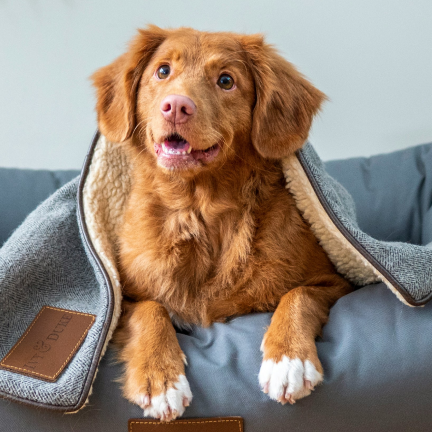Blog:Common Signs of Dental Disease in Dogs

Dogs cannot communicate verbally, so it can be challenging to know when they have health issues. As a pet parent, you must rely on external evidence and behavioral changes to determine if your canine is unwell. It is easy to know if your pet has knee or leg pain. However, it is harder to spot dental health issues. Canine oral health can go unnoticed for long periods, causing extreme distress to pets.
Changes in Eating Habits
Most dogs love to eat, even when they are not hungry. One of the most obvious signs of dental disease is the refusal to eat or changes in eating behavior. If your pet is experiencing oral pain, he may refuse to eat, even when you provide his favorite snacks. Sudden disinterest in eating can indicate a tooth or gum problem.
Developing Bad Breath
Contrary to some opinions, bad breath in dogs is not normal. It can indicate a dental health issue. An infection from an abscessed tooth or gum problem can lead to severe bad breath due to bacteria accumulation. If you notice sudden bad breath, take your pet to the vet immediately to avoid the spread of bacteria into the bloodstream.
Bleeding Gums
If your dog has bleeding gums or you notice bloody stains on chew toys, it can be a sign of dental disease. However, blood on chew toys could also be due to misdirected biting. Look for signs of bloodstains around the feeding area. A visit to the vet will determine whether your pet has periodontal disease or a gum infection.
Red and Swollen Gums
If your dog has dark red and swollen gums, it can be due to an infection. Swollen gums are a common sign of poor dental and general health. If your pet has gingivitis or periodontitis, the gums may turn dark red. Visit the vet to prevent the swelling from spreading to other facial areas.
Excessive Drooling
While some drooling is normal, excessive drooling is a common sign of dental disease in dogs. If your pet is drooling more than normal, it can be due to pain. Contact your veterinarian for an exam. Remember, some dog breeds tend to drool more than others.
Discolored Teeth
Like in humans, excess tartar around the teeth can lead to discoloration. The teeth may become yellow or light brown due to tartar buildup. If not addressed, the buildup can cause serious dental issues, such as gingivitis or periodontitis.
Strange Behaviors
As a pet owner, you should know your canine’s usual behavior. If you notice something strange in how they act, it could indicate a health condition. A dog experiencing dental pain may exhibit signs like excessive ear scratching, frequent sneezing, and crying when yawning.
Other behaviors to look for are licking their nose more often and swatting at their face. If your dog seems depressed or uninterested in play activities, it could be a sign of dental disease. When animals are in pain, they tend to be irritable and choose to sleep more often.
Other signs of dental disease include bleeding around the mouth, oral lumps, and swelling under the eye. Check your pet’s mouth regularly and schedule regular dental appointments.
For more on common signs of dental disease in dogs, visit La Jolla Veterinary Hospital at our office in La Jolla, California. Call (858) 454-6155 to book an appointment today.
Sources:
https://www.petmd.com/dog/conditions/mouth/dental-issues-dogs
https://www.webmd.com/pets/dogs/features/dogs-teeth-toothaches-problems


